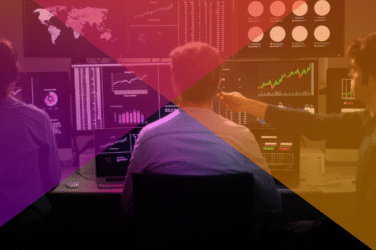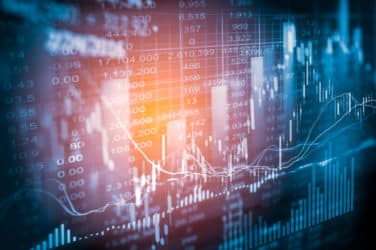Today’s traders are bombarded with new technology, designed to help process new forms of data and help fulfill the ever-increasing mandate of new regulations. Greg Skibiski, Chief Executive Officer at Thasos, a firm that seeks actionable real-time location data from mobile devices, spoke to Traders Magazine about how his firm looks to help traders make sense of new data forms and create new alpha-bearing trading strategies amid heightened regulator scrutiny.

Greg Skibiski, Thasos
Traders Magazine: How does the buy side currently view alternative data? You’ve focused your business on hedge funds. Is there a difference between how hedge funds and institutional investors use alt data to inform investment decisions?
Greg Skibiski: Most alternative data products in the market today are designed for equity long-short fundamental managers, which slows adoption rates by institutional investors. Generally, larger organizations with longer investment horizons and less portfolio turnover adopt new technologies/data at significantly slower rates than their smaller and nimbler counterparts.
That said, in 2017 we have seen increasing interest from institutional investors and those with longer holding periods. Unlike the typical equity long-short manager who consumes relatively high-level data to trade marginal information advantages on as many names as possible each quarter, some managers with a longer holding period are using significantly more granular data to build deep fundamental models from the ground up. Others are using the same data as the equity long-short managers, but with a focus on risk management and position-sizing rather than short-term alpha generation.
TM: How do you collect data and how do you analyze it for clients? What about privacy concerns?
Skibiki: We only work with geolocation data from mobile phones, that’s it. Our data is collected from apps on mobile devices, based on first-party relationships with the app publishers. It has taken us six years to identify the highest-quality sources, build those relationships, and execute long-term license contracts.
In those six years, we evaluated probably a thousand datasets during the process. Most datasets sound great when discussed at the initial meeting; you don’t find out until the very end if they’re any good. The problem is, these companies just don’t have the tools or experience to be able to properly describe their own data.
We don’t receive any Personably Identifiable Information (PII) from our sources, and the data is only collected after users opt in. We also only deliver aggregate, anonymized data feeds and contractual limitations prohibit attempts to de-anonymize the data. All of this is essential to pass the compliance processes of the funds we work with.
TM: What are the most significant limits of the technology at this point?
Skibiski: For now, the data collection methods our platform uses do not have the same indoor accuracy as a Bluetooth beacon, for example, but we can measure foot traffic at thousands of previously unmonitored properties as quickly as tomorrow, and we immediately benefit from over two years of historical data to find statistically significant patterns and generate the actionable information.
Where physical sensors (beacons, video equipment, etc.) are deployed, aisle-level accuracy is possible for retail shopping, and we have looked at that. However, physical hardware doesn’t scale efficiently. It can take years to roll out physical sensors at even a few hundred locations.
TM: How do you see regulation impacting your business? Would proposed oversight of big data firms (Google, Facebook, etc.) limit your ability to capture information?
Skibiski: As we’ve made the decision to exclude PII and advertising IDs from our platform, and to deliver all information at certain standards of aggregation and anonymization, we believe our business would be insulated from the most likely potential regulations.
On the other hand, we think the advertising technology space is ripe for regulation, considering its use of PII.
Unlike some other types of alternative data, we’re just measuring something in an efficient way that anybody could do using many other methods. Funds have been counting people at stores using clickers for eons, it’s nothing new and unlikely to ever be seen as material non-public information.
TM: Alternative data to this point seems like it has been used primarily by portfolio managers and model builders, but we’ve been hearing that it is making its way to the buy-side trading desk. Is that your experience as well?
Skibiski: Yes. As a data analytics company, some of our products are closely related to asset prices, and we provide them not only as time series data feeds but also in graph/report format. Traders can instantly grasp the ideas presented and act accordingly.
TM: Are sell-side algorithms making use of this data in their decision-making logic in the same way that they consume more traditional forms of market data? If not, do you see that happening any time soon?
Skibiski: Sell-side companies are definitely very interested in this space and they have done a considerable amount of research to advise their clients. I am not sure if they actually use such data in decision-making though; due to strong regulations on trading-like activities, the benefits of alt data for the sell side may be much smaller than for the buy side.
Today, the interest is there and the applications are obvious, but the buy side has provided effective incentives to limit sell side access. As alternative data continues to saturate the market, I expect this dichotomy to weaken.
TM: What are the broader societal implications for what you do? Have you considered working with governments or NGOs to understand patterns outside of commerce?
Skibiski: Definitely. Our company is built on the belief that we will revolutionize the way broad economic activities are measured globally, across all sectors. Up until now, we’ve focused on providing better answers to questions people already have, but this data can do much more.
Let’s say you want to understand manufacturing employment across five countries. Country-by-country, that information is currently reported in various different ways, or not at all. Is it even possible to make comparisons from one region to the next? But Thasos can report manufacturing employment across all the countries in real-time, by ticker and subsector, using the same exact metric system, at nearly 100% coverage, including non-public companies. Nobody has ever thought how to trade on this kind of information, let alone set public policy by it. This is where it starts to get interesting: it’s a whole new platform for applications nobody has thought of yet.
There is certainly the prospect that this kind of transparency could reduce market shocks, to name one benefit. Beyond financial markets and economic insights, we believe that eventually many functions of a census bureau can be replaced by technologies like ours, and government officials will get some much-needed real time transparency. Hopefully this will lead to responsive and correct fiscal and monetary policies from which everyone would profit.





